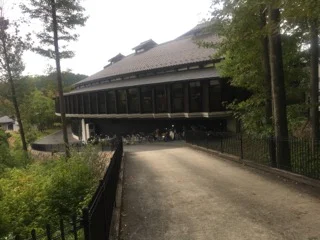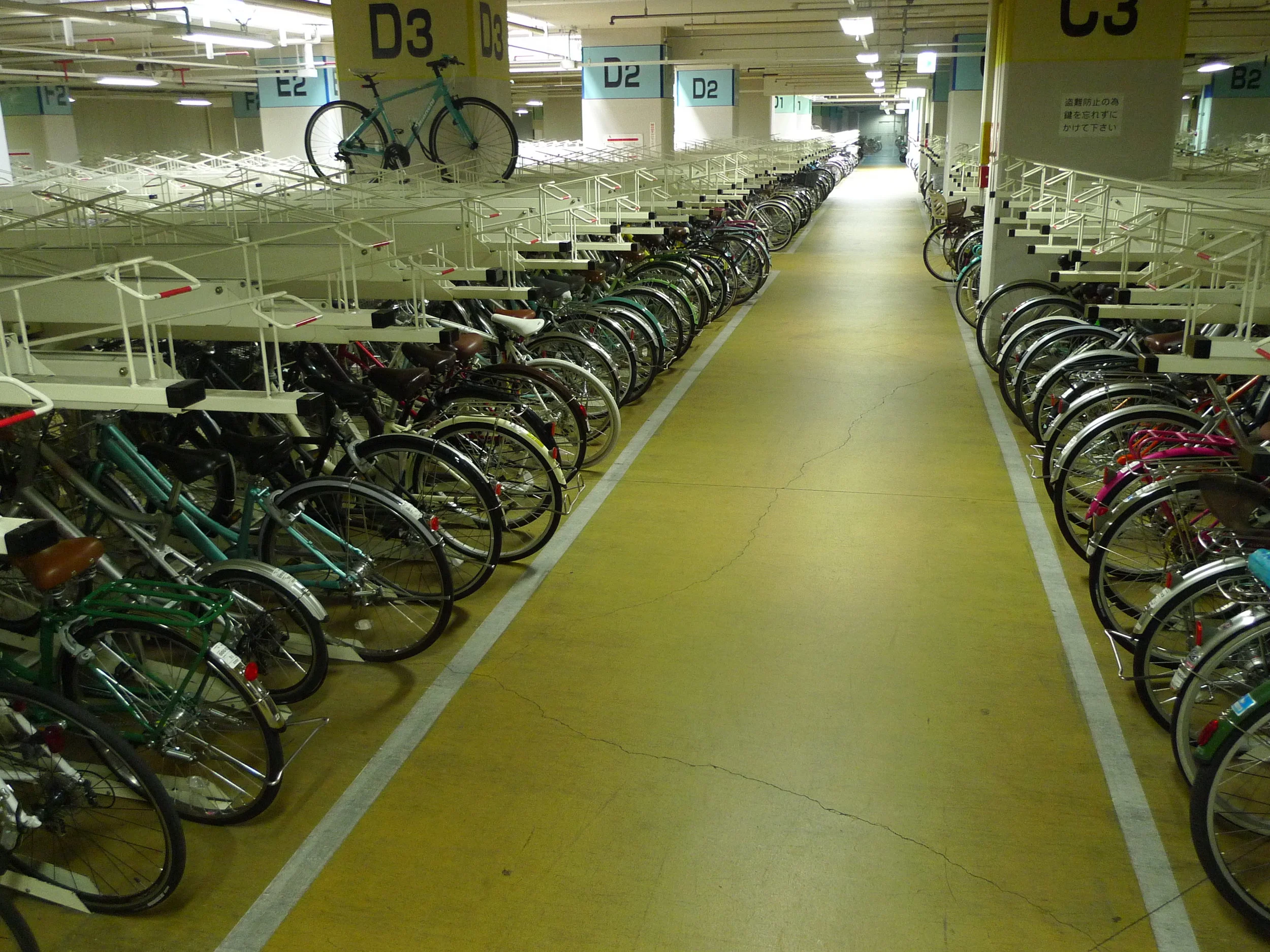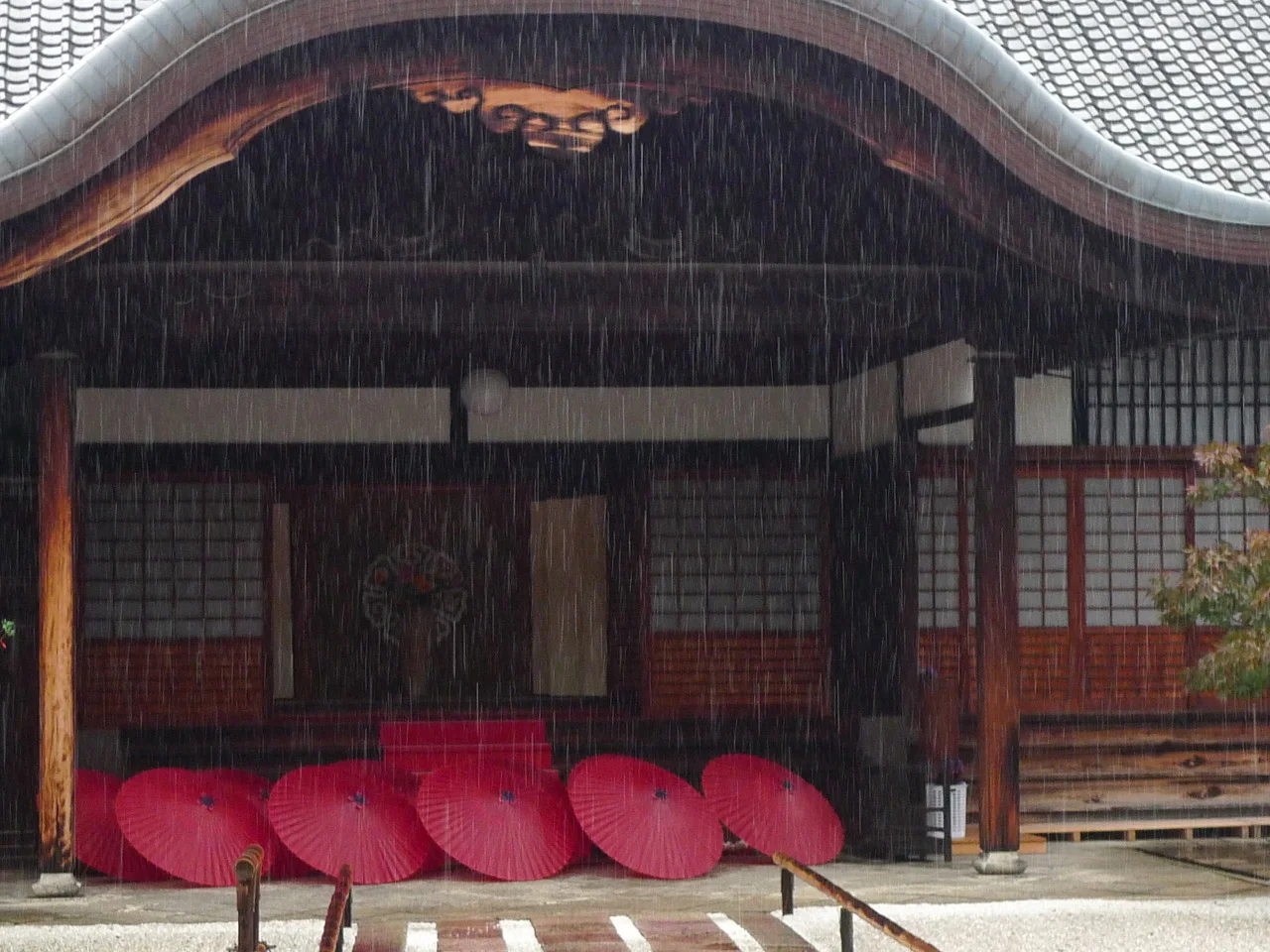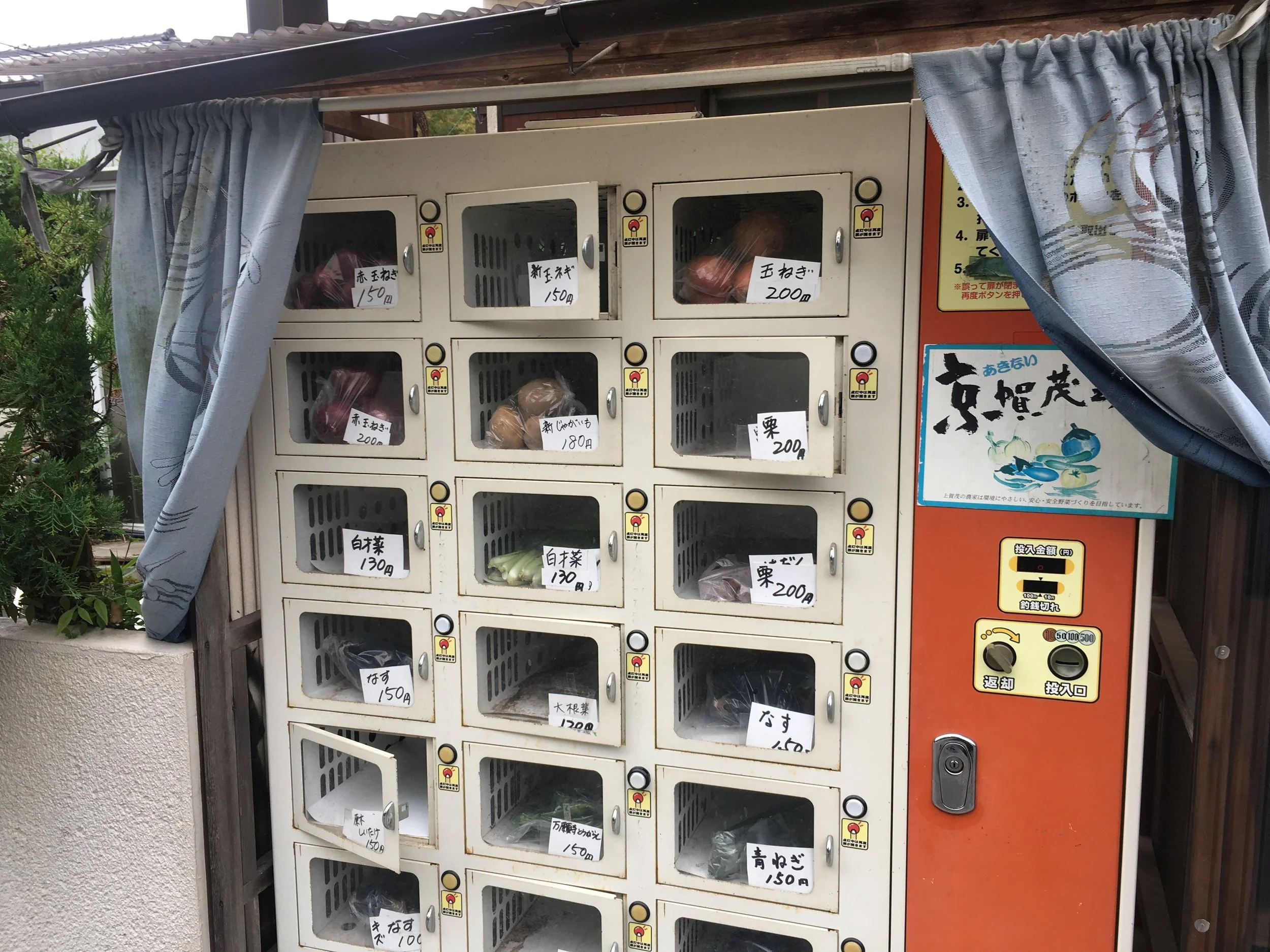Kyoto Diaries - 1
A week has passed since we arrived in Kyoto. Monday last was a national holiday, so I officially started work on Tu with 6 people around a table to walk me through my paper work. Much oration in Japanese, reading of texts and one sentence translations (e.g. the date of my pay day and that I am expected to work 35 hours and 40 minutes a week). The book where I sign in daily – soon to be stamped with my official chop – was shown to me, and off I went on my tour of the building. The Research Institute for Humanity and Nature was built in the 80s and looks a bit like as space ship. It has a crescent shape, very looming tile roof, open floor plan with sections. The windows are tinted, so its all a bit dark, wall to wall carpet is dark and walls are painted a coffee brown – not terribly cheery. Lights are on motion sensor. I sit in section 9 with a nearly lone desk looking out into the interior court yard. Across the way is the library and upstairs is administration. Next to the library is a clean room with bit dot matrix printers and an occasional staff person snoring at his desk. There is also a very nice common kitchen where bento boxes are available for sale at lunch everyday. The library has an eclectic collection of books, slightly oriented toward cultural anthropology, and area studies type of books. There is also an ecological science section. Most books, naturally, are in Japanese. The library feels largely unused.
On my side of the building the sections are divided up into project areas and each project area has a kind of kitchen and common seating area. Each has a slightly different feeling, no doubt reflecting the research specialty of the group – ha.
Down the hill are the apartments of the Institute. We have a ‘2’ bedroom apartment which consists of a main room with kitchen, dining and living room and an area with a single bed that can be separated with sliding doors. That area has a big sliding door that looks out toward the road to town and south. The there is a bedroom and bath and separate toilet. The bath has a bathing room that is a modular plastic box with a small deep tub. There is a hand shower you can use, and it is expected you wash outside of the tub. In fact there is a big long drain all along the tub. The mirror is about thigh high, so one crouches, washes thoroughly and dips in the tub. At least that is how I have interpreted the arrangement. The washing box is about 6 ft high.
The toilet is smarter than I am, and I am going to lose all ability to act on my behalf by the end of 3 months. The seat rises when I enter, the rim of the toilet heats up, it flushes on its own, and there are many other comfort functions I am still too intimidated to explore.
All-in-all the apt works, we appropriated bowls and pots from the communal kitchen so we could cook. There are also bicycles that really make the difference since we are a 10 minute ride from the subway – down hill – though buses are pretty regular. Across the road there is a small concreted creek, and a small rice field that was harvested on Weds amidst the houses and apartments. I discovered a little tiny bakery open Weds and Friday where the baker makes lovely baguettes and boule shaped breads. In this northeastern suburb, there are mostly houses and apartments, punctuated by some fields, mostly rice, but also vegetable growing gardens. They are largely very well tended and seem quite productive. Some of the apartments look like they are closer to prisons than dwelling units. The fronts are flat planes with heat pumps and doors that look like doors to a vault. The apt itself then has only one window at the far end, long, dark and very small. Like container units stacked up 2-3 floors.
Yesterday we went to Ohara (not O’Hara), a 30 minute bus ride along a decent sized creek up a gorge. It opens out into a valley where there are small plots – rice, eggplant, peppers, okra, onion – and a village. There is a little village store where farmers sell their produce, each section with a picture of the farmer who grew the produce. We had a nice dish of soba in dashi at the little restaurant there. Ohara is famous for its temple walk, up a side of the mountain, temple after temple. There is a water fall that is lovely and renowned for how it relates to the local music school, but it was a little unclear to me how. In the Fall, when the maples change color, it will be spectacular. The walk is totally developed commercially with little boutiques selling clothing and souvenirs, as well as many different locally made pickles, drinks and other things, and there were lots of places to eat along the way.
Today we went to the bamboo forest in the eastern part of Kyoto, a monocrop if I have ever seen one. Filtered light, quite pretty, but unclear how new growth comes about. Jammed with visitors – mostly Japanese. We also went to see the macaque monkey reserve! Japan has macaque monkeys, the species that lives the farthest north of all monkeys. You walk straight up the mountain (they tend to be all quite steep, up and down, up and down and with lots of visible erosion; it rains a lot). When you get up to about 1,000 feet there is an area that has been developed for viewing and interaction. The local troupe is about 100 individuals, mothers with babies clinging to their bellies or riding on their hind quarters (that is so cute). Males strutting around and posturing. The view of Kyoto spread out for miles is spectacular.
So, humanity and nature here in Japan. First impressions. The Japanese are far advanced in the Anthropocene, their relationship in shaping nature precedes the hydrocarbon Anthropocene, for sure. The relationship is intimate, close, aesthetic and domineering. It can be – and of course often is – beautiful, but so totally lacks spontaneity, it is also smothering. A garden around one of the temples in Ohara was famous due to its manicured carpet of moss, punctured by trees, maples and other. It was both exquisite and extreme, so unlikely, while the temple itself was built in about 900. We in the Western US have a long way to go.
Forgot to mention I played hooky one day last week (I was a bit fried) and went to a monthly flea market with Jonathan. A day would not be enough to explore it. A hodge podge of old and new, fabrics, clothes, tools, dishes, handicrafts, food, on and on. My appetite has been satiated, I have to say, but Jonathan is going to another monthly market tomorrow. I am bound for the office up the hill (3 minute walk) and fulfilling my 35 hours and 40 minutes this week. The Institute site is next to an experimental forest I am hoping to explore.
My host is originally Dutch and went to China for a number of years to do development work. He studied rural to urban migration. He then spent several years in Singapore, also in development research, but management, and is now here where he is a division chief. He speaks Chinese and Japanese and is always on the go. There is little urban focus at the Institute, so it will be interesting to see what ensues. Interdisciplinary research at the Institute is defined is their specialty (say dendrochronology) + stakeholders. Not interdisciplinary science, bringing together different expertise + stakeholders. I will reserve judgement, and I am sure there is much more to it than I yet know.
Its still warm and humid, but not awful, in the 80s in the day, high 60s at night. Curious to experience the seasonal change.




